
By Felix Delbrück*
 The Westpac McDermott Miller Employment Confidence Index has recovered modestly over the past three months, and now sits back at 98.9, the same as in March.
The Westpac McDermott Miller Employment Confidence Index has recovered modestly over the past three months, and now sits back at 98.9, the same as in March.
However, that still leaves the index the second lowest since the trough of the recession in mid-2009.
The improvement in employment confidence reflects slightly brighter expectations for the year ahead.
In particular, there has been a jump in perceived job security – to the highest since mid-2011.
This may reflect the fact that some of the uncertainty around the global economy has eased since the European Central Bank pledged to do ‘all that it takes’ to keep the euro zone from breaking apart.
Within that weak overall picture, today’s survey shows the divergence between job perceptions in Canterbury and the rest of the country reasserting itself. Employment confidence in the region has bounced back into optimism, and is by far the highest nationwide.
That said, while Cantabrians now clearly see greater job opportunities than people in other regions, their current and expected wage growth looks less out of the ordinary.
That suggests that the wage pressures we’ve been seeing in the region’s construction sector aren’t yet spilling over to the broader regional economy in a major way.
More broadly, today’s survey suggests the trend in nationwide wage inflation remains pretty flat.
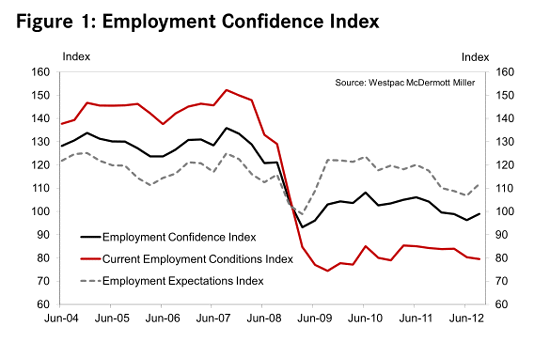
However, households continue to see nationwide job opportunities as very limited. That no doubt reflects another disappointing labour market report in the June quarter, which showed the unemployment rate rising further to 6.8%. However, people may also be speaking from personal experience: this part of the survey has to date been a good predictor of actual unemployment trends. It suggests that the unemployment rate remained high in the September quarter.
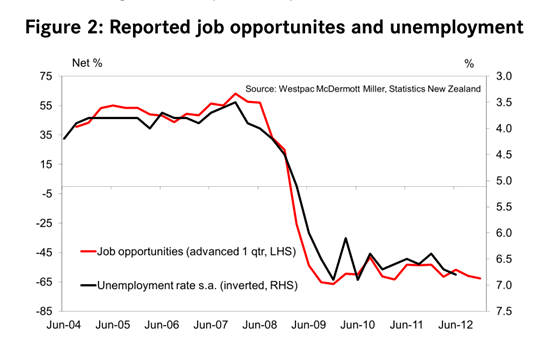
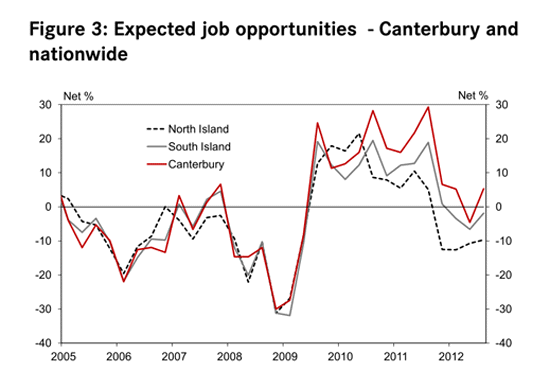
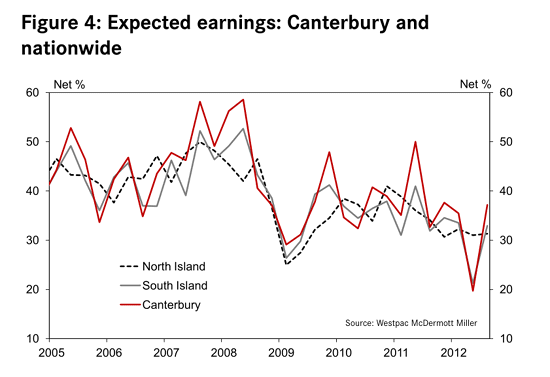
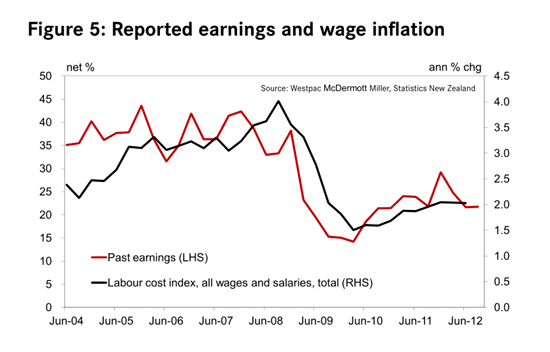
Survey details
The Employment Confidence Index summarizes responses to five questions, two of them about the present, as summarized in the Current Employment Conditions Index (current job opportunities and current earnings), and three about the year ahead, as summarized in the Employment Expectations Index (expected job opportunities and earnings, as well as expected job security). The questions about current and expected job opportunities are questions about the New Zealand job market as a whole; the other questions are about households’ own employment situation.
Further details about the individual questions are in the charts on the last page. The survey took place over the period 1-9 September, with a sample size of 1553.
• Households’ assessment of current job opportunities has fallen for a second time in a row, with a net 63% of households now saying that jobs are hard to get. This is the weakest this part of the survey has been since late 2010, but that’s not saying much – it’s been stubbornly downbeat ever since 2009. A net 8% of households expect jobs to become even harder to get over the year ahead, compared to 10% in the previous survey.
• At the same time, those with jobs have reported a lift in their perceived job security. A net 12% now expect their job security to improve over the year ahead, up from just 2% three months ago.
• The survey continues to show few signs of rising wage pressures. A net 22% of households reported an increase in their labour earnings over the past year – the same as three
months ago. The balance of households expecting a wage increase over the year ahead increased slightly, from a net 29% to a net 32%, but remains softer than 6 months ago.
Regional and demographic breakdown
Three months ago there was a surprising drop in Cantabrians’ employment confidence. That proved to be a one-off, and may have been a statistical quirk. Canterbury saw the biggest rebound in employment confidence of all (from 98 to 111, the highest since September last year) and is now once again the most optimistic region by far: Cantabrians are among the least downbeat about current job opportunities and the only region to expect job opportunities to improve over the coming year. Interestingly, the next biggest improvements were in Wellington and the Bay of Plenty – the two most downbeat regions 6 months ago. It may be that in both regions there is now the growing sense that ‘the worst is over’. The Bay of Plenty saw a particularly large lift in job security, and Wellingtonians have become a lot less pessimistic about future job opportunities.
Even so, both regions are still pessimistic overall. In general, while employment confidence improved in 7 out of 11 regions, it mostly remains in pessimistic territory (apart from Canterbury, the exceptions are Auckland, Nelson/Marlborough/West Coast, and Southland).
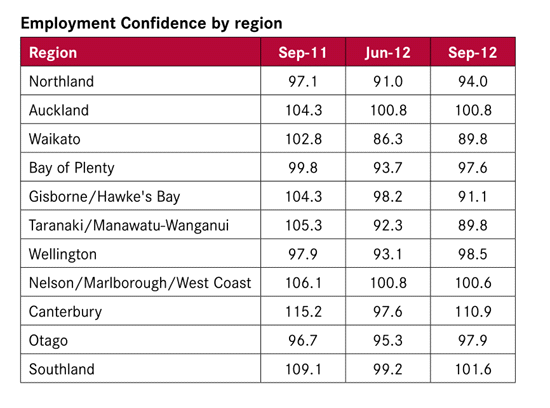
Both male and female employment confidence improved – slightly more so for females. However, the gender gap that opened up since the recession persists, with male employment confidence higher on balance.
Employment confidence also rose across age groups, though particularly so for younger respondents (those aged 18-29, who tend to have the highest employment confidence anyway). By socioeconomic group, employment confidence rose for in the lower- and upper-income brackets, but dropped sharply for middle-income households.
Like the other income groups, that group saw an improvement in perceived job security, but it’s became more downbeat in other respects.
-----------------------------------------------------------------------------------------
We have expanded our finance sector jobs listings and you can now find these here » for New Zealand, Australia, and Singapore.
-----------------------------------------------------------------------------------------
* Felix Delbrück is a senior economist at Westpac in Wellington. His focus is on forecasting and analysing the New Zealand economy. Before joining Westpac, he worked at the Reserve Bank for seven years. His roles there included maintaining the RBNZ’s main economic model and leading the RBNZ’s international forecasting team. You can contact him here »
We welcome your comments below. If you are not already registered, please register to comment
Remember we welcome robust, respectful and insightful debate. We don't welcome abusive or defamatory comments and will de-register those repeatedly making such comments. Our current comment policy is here.